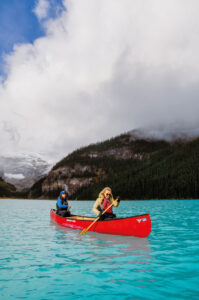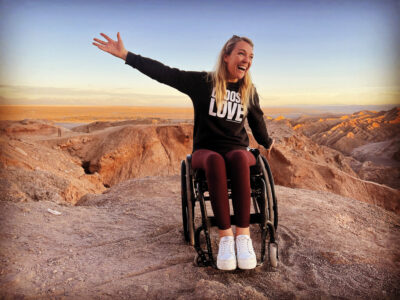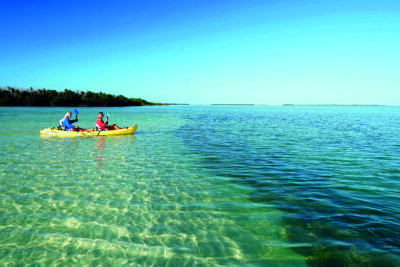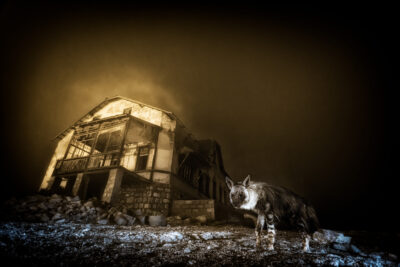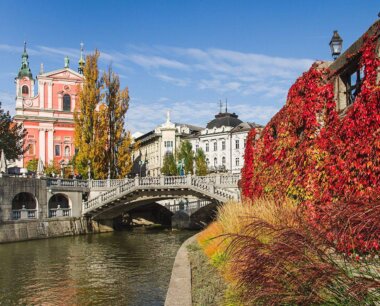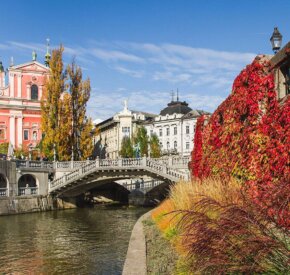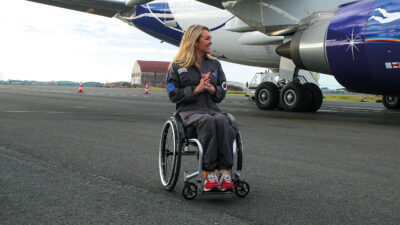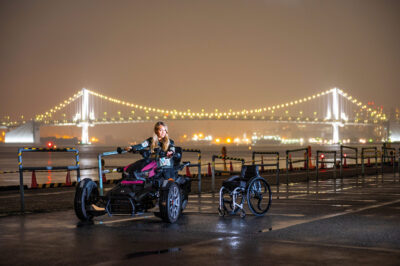
Inclusive travel: Wanderlust contributing editor Sophie Morgan introduces her new regular feature
TV presenter, travel writer and Wanderlust contributing editor Sophie Morgan talks about her experiences as a disabled traveller and why inclusivity enriches travel for all of us
Let me start by asking you a simple question: when you hear the words ‘disabled traveller’, what picture springs to mind? Be honest. What does this person look like? How old are they? What activities do you imagine they enjoy, and what sort of trips do you think they take?
Ok, now let me be truthful with you. When I first confronted this very question, my response wasn’t exactly positive. My unconscious bias revealed that I believed disabled people couldn’t or wouldn’t travel, certainly not in the adventurous and intrepid ways that I, a young, bold, athletic, thrill-seeking yet (at the time) unimaginative woman had in mind.
Wheelchairs, I assumed, were not designed for exploring off the beaten track. In fact, I thought that disabled people – having never spent time with any – could barely leave their front door. Unfortunately for me, it was a terrible shame that the first disabled person that I would ever meet would be… me.
“You are never going to walk again.” These were the words that were delivered to my 18-year-old self, who was poised so precariously on the brink of adulthood. They felt like the harshest of blows.
The day that I left school, I was in a near-fatal car crash that damaged my spinal cord, leaving me permanently paralysed from the chest down. In the summer of 2003, I woke up in a hospital bed in Scotland, my world completely unrecognisable from what it had been before.
For months after the crash, I lay trapped in spinal rehabilitation, grappling with what my future might hold. The stereotype I had of a disabled person did not match the vision I had for myself. Before my injury, my dreams had revolved around travel and, beyond that, university. But now, as a paraplegic and full-time manual wheelchair user, my horizons felt painfully limited. And worse still, after rolling out of the hospital three months later, I quickly learnt that my inability to walk would come to be the least of my concerns.
Disability means far more than just bodily impairment. While paralysis had altered my physical abilities, challenges also came from the world around me: steps, stairs, narrow doors, impossible terrain and, worse still, ignorant, small-minded and prejudiced people – just like I had been. Everywhere I turned, barriers loomed. It seemed that the world was not designed for people like me.
Then, something extraordinary happened. Just six months post-injury, I found myself deep in the Nicaraguan jungle. Eleven people (including myself), each with a different disability, embarked on a groundbreaking expedition with the BBC, helping one another cross one of the least accessible places on Earth. Deep in that jungle, exposed to the elements, I faced a profound realisation: our bodies might change but the world can still be ours to explore; we just have to find alternative ways to navigate it.
Since then, I’ve spent the past two decades pushing beyond boundaries. I refused to accept the limits placed on me by myself and by society, and I was determined to travel as much as I could and live on my own terms.
However, travelling as a female manual wheelchair user who can neither move nor feel two-thirds of her body hasn’t always been straightforward. Like many others in my situation, I have a tome full of horror stories. I’ve arrived in foreign cities, hopeful and exhausted, only to discover that my carefully booked ‘accessible’ hotel room had steps blocking the entrance, leaving me stranded outside.
I’ve been carried onto planes like luggage, my independence stripped before takeoff, and forced to drag myself down the aisle to access a toilet. I’ve had wheelchairs lost, damaged and even destroyed by airlines. I’ve been spat on by strangers calling me “cursed”, evicted from restaurants due to being deemed a ‘fire hazard’, physically barred from guided tours and refused entry into resorts.
Unfortunately, these aren’t isolated incidents but part of a relentless pattern of discrimination faced by disabled travellers worldwide. And yet, I persist. Thankfully, my adventures have been just as relentless.
As a TV presenter for the BBC and Channel 4, I’ve travelled the globe, from the busy streets of Rio to the futuristic bustle of Tokyo (covering the Paralympics), to the suffocating heat of the Australian Outback, to the densely packed slums of Ghana, to the remote and windswept landscapes of the Outer Hebrides. I even once found myself in a tiny Norwegian village known as the ‘middle of nowhere’.
As a travel writer, I’ve pushed even further. I’ve watched breathtaking sunrises over the Rockies from an adaptive mountain bike, carving my way along trails once considered off-limits for wheelchair users. I’ve felt the heart-pounding rush of free-falling through the sky from a plane. I’ve floated at zero gravity and scuba-dived in waters so clear that they looked like liquid glass. Weightless and unrestrained, I watched shafts of sunlight dance beneath the surface. It was a reminder that some of the world’s greatest wonders are found where no barriers exist at all.
Now, at 40 years old and living in southern California, where I host and produce TV shows when I’m not riding my motorbike, I’m more determined than ever to keep dismantling barriers and challenging the perceptions of what it means to be disabled.
In this brand-new column dedicated to accessible and inclusive travel, I plan to help redefine what meaningful travel truly entails. I want to tell the stories that aren’t being told and to take you along on my adventures – the breathtaking, the frustrating, the absurdly difficult and the wildly exhilarating alike. You will come on a journey of discovery with me.
I have grown to understand that disabled travellers are just like any other traveller; we too crave adventure, yearn to take the road less travelled and curate bucket lists of our own. The fact is: disability will impact every one of our lives, be that temporarily (think a broken leg or a bout of illness), permanently (like me), through ageing (if we are lucky!) or through our loved ones, so I hope you find this space is a place for us all.
Beyond travel tips and news, this column will explore where everyone can travel and how true inclusivity enriches travel experiences for all of us, not just disabled travellers and our families.
Every destination is at a different stage in its journey towards inclusion. While I intend to feature those who are further along than others, this column will also hopefully signpost to the rest why they too must learn to unpack the ableism that currently prevents us from living in the world as freely as we all deserve, giving examples of how to take the necessary steps towards change.
I want to shift perspectives, break down barriers and prove that our potential for adventure should be limited only by our imagination, never by our abilities. So come along for the ride. Let’s make the road less travelled a path that everyone can enjoy!
Read next: Invictus Games 2025: why British Columbia is becoming a hub for accessible winter adventure

